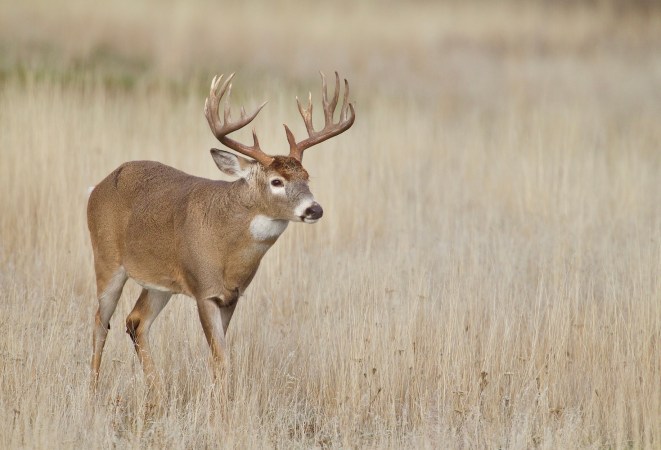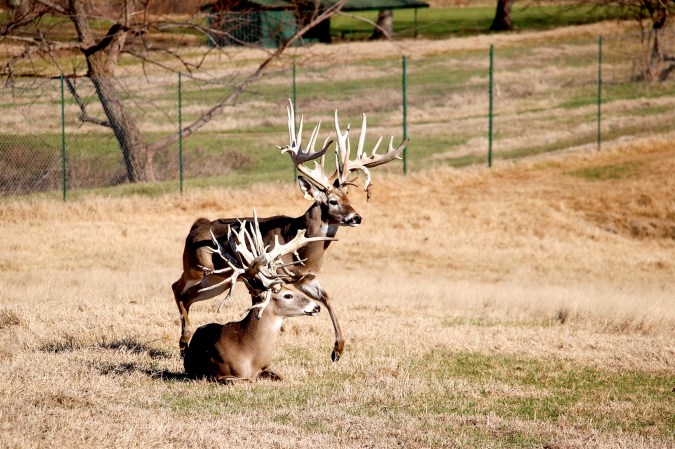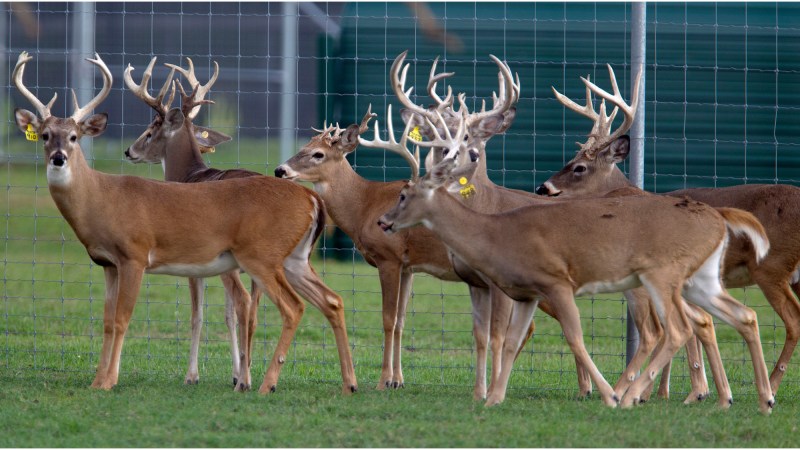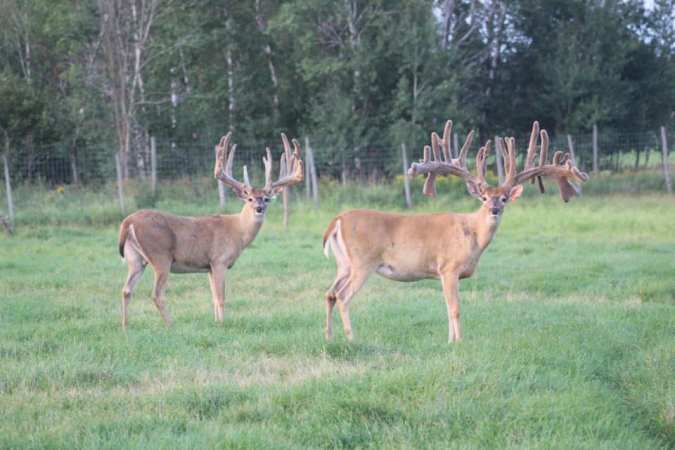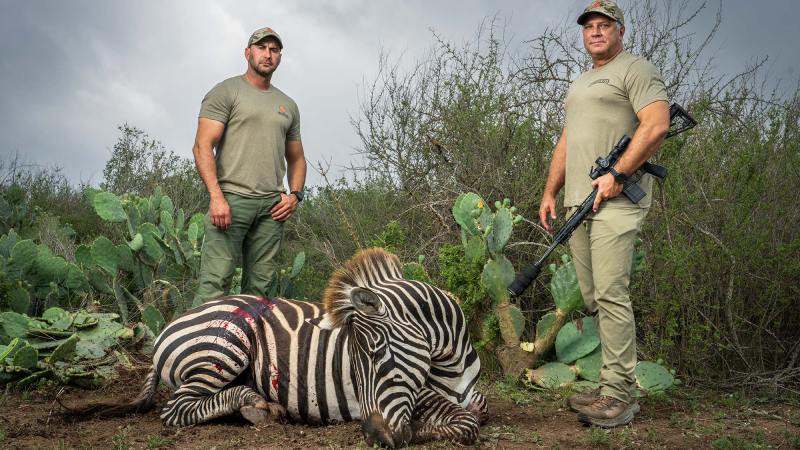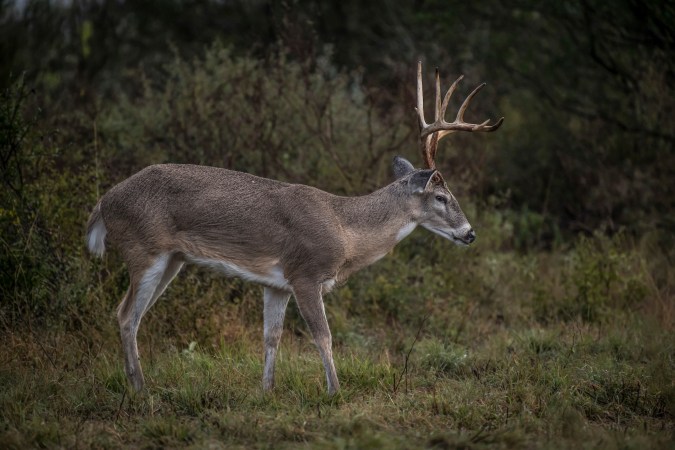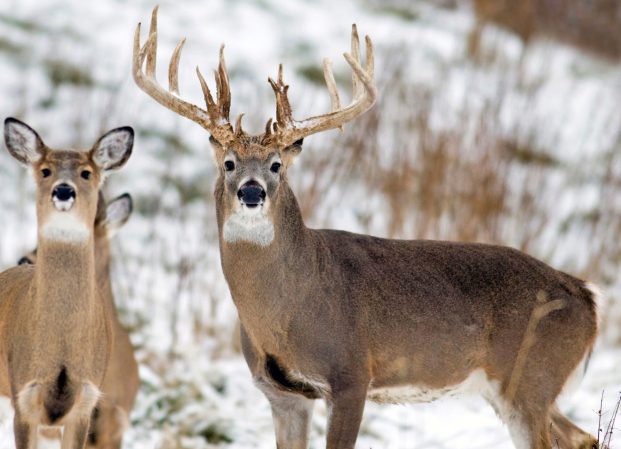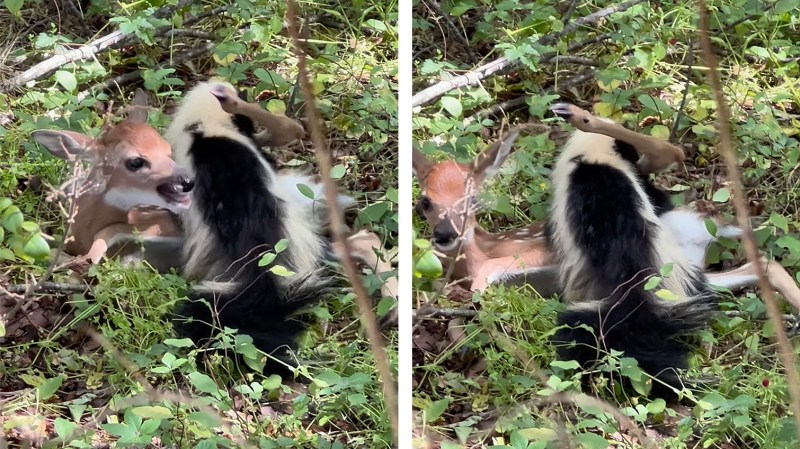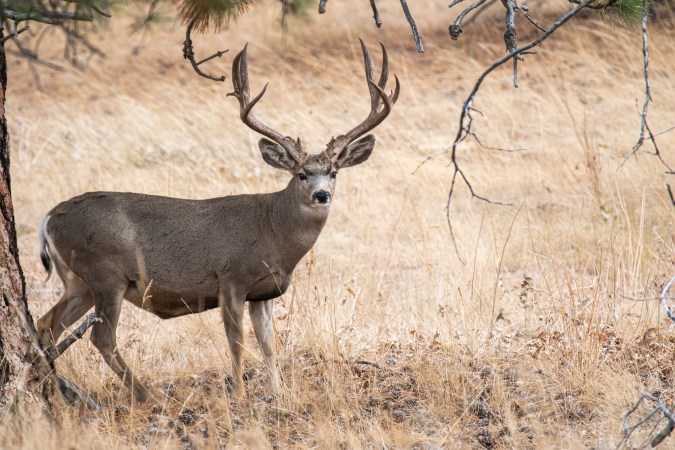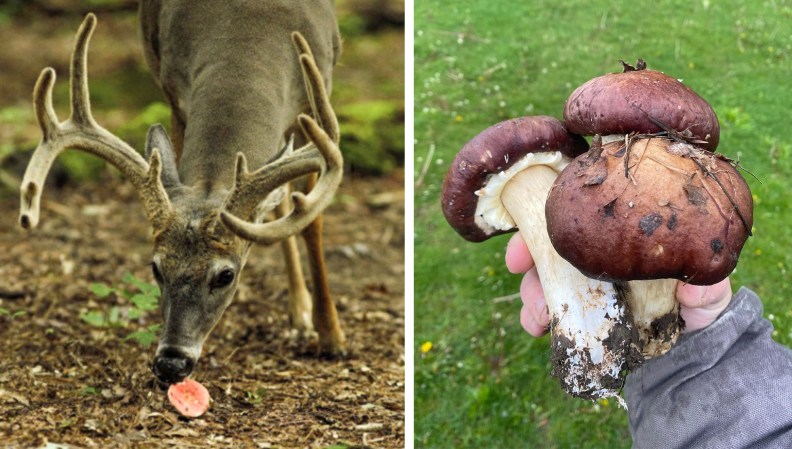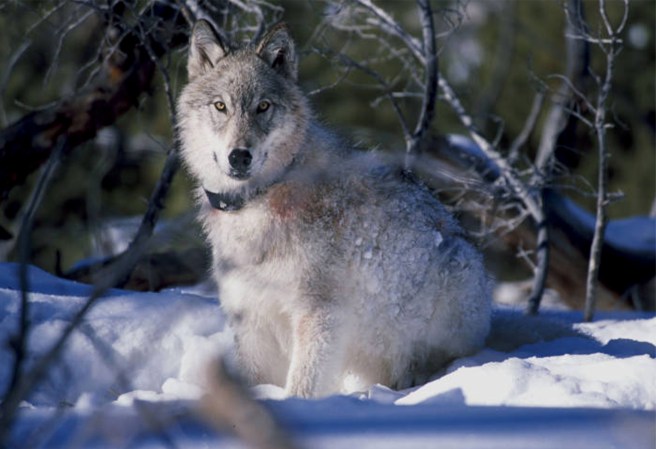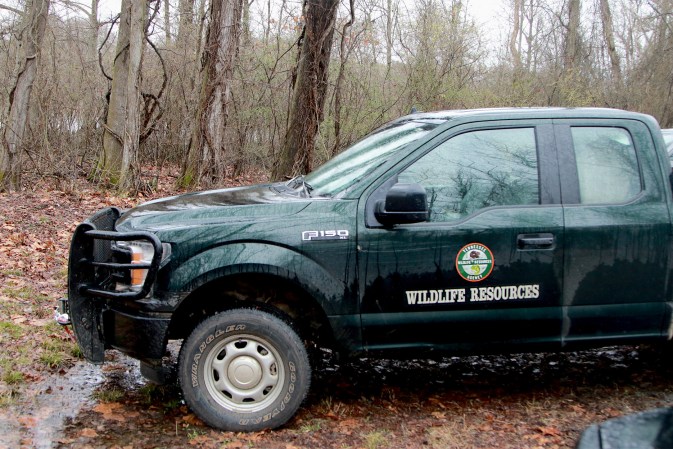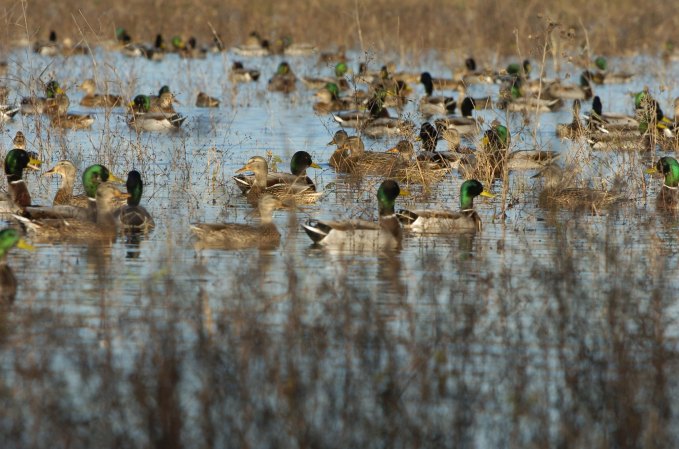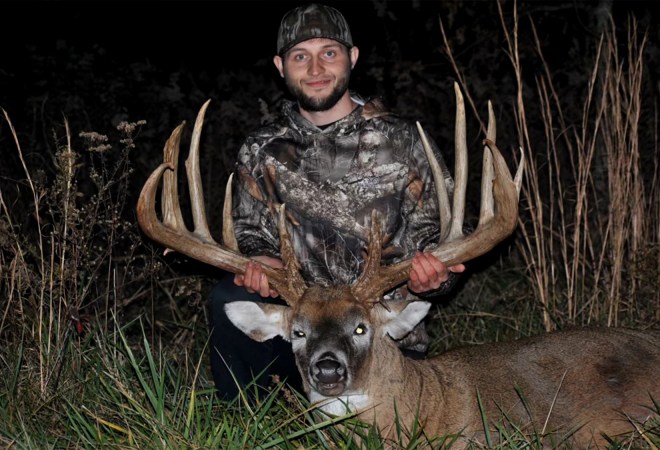It’s taken more than two years and five attempts, but on May 28 Texas health and wildlife officials killed every remaining captive whitetail deer on Robert Williams’ high-fence ranch in Kaufman County. Officials say the state-ordered depopulation was long overdue and it closes a tumultuous legal battle that pitted the 85-year-old deer breeder against the Texas Parks and Wildlife Department.
A team of 68 state workers killed, dissected, and disposed of 249 whitetails at RW Trophy Ranch, according to a TPWD spokesperson. They shot all but a few of those with firearms, as Williams and his daughter Maree Lou Williams had personally euthanized three of their oldest deer before workers arrived. This included a 15-year-old breeder buck named Monarch Supreme, and an older doe that Maree Lou had bottle-fed as a fawn.
“All of [Maree Lou’s] does were pets, but she had one particular doe that would have gone inside the house and slept with her,” Williams tells Outdoor Life. “We darted ‘em and put ‘em down humanely. I just didn’t feel like that old 15-year-old buck deserved such rotten treatment … I should’ve done ‘em all that way.”
Read Next: In the War Against CWD, Deer Breeders in Texas Are Being Cast as Both the Enemy and the Answer
Williams says he begged officials to run the deer through chutes — like the ones used to inoculate cattle — while shooting them, but that the workers shot the deer as they ran back and forth in their pens instead. The whole operation, which included the processing and disposal of the deer, occurred between the hours of 7 p.m. and 3:30 a.m., according to TPWD.
“They could have mercifully killed them, and I wouldn’t have felt quite as bad about it,” Williams says. “But they were cruelly slaughtered, and those deer went crazy. They bounced off the fence, ran into each other and broke each other’s legs. They were just so shot up. That’s what burns me.”

Photo courtesy RW Trophy Ranch
The deer breeder vows to continue fighting the state, just as he did when we visited RW Trophy Ranch in January 2023. He says he’ll be filing another lawsuit against TPWD to seek reimbursement for the killed deer. (Under Texas law, pen-raised whitetails are treated not as livestock, but as a state-owned natural resource that is used by breeders until they’re released from a pen — at which point they can never be brought back inside.)
“While they were cutting [those deer] up, I told ol’ Alan Cain [the director of TPWD’s big game grogram] they’re a lowlife, sorry bunch of trash,” says Williams, who’s never minced words when speaking about the agency. “And they hate me, too, because nobody’s ever kept them at bay like I have. I won a lot of battles, but I lost the war.”
An Outbreak of Historic Proportions
In a statement emailed to Outdoor Life, TPWD officials said they felt the depopulation was necessary to protect the state’s wild deer herds, and because of how bad the CWD outbreak had gotten at RW Trophy Ranch.
The agency has long used depopulation as the primary tool for preventing the spread of CWD from captive deer breeding facilities, and they planned to do the same at RW Trophy Ranch after one of Williams’ does tested positive for CWD in March 2021. Williams and his attorney thwarted their attempts on four separate occasions by filing appeals in circuit courts, but the Texas Supreme Court eventually sided with TPWD on May 15 of this year, vacating a temporary restraining order against the agency that had been filed in Kaufman County.
By May 28, 254 of the captive whitetail deer that had died at the ranch since March 2021 had tested positive for CWD, TPWD officials said. In a past legal filing, the agency referred to the breeding operation as “the worst-ever CWD outbreak” in Texas history, according to the Fort Worth Star-Telegram.
“Nearly 90 percent of samples collected [from RW Trophy Ranch] this year tested positive or suspect positive,” TPWD said in the emailed statement. “RW Trophy Ranch was losing an average of 2 percent of its deer herd each week. In addition, 12 deer also tested positive on release sites either near or associated with RW Trophy Ranch.”
Officials added that during their most recent inspection of Williams’ breeding facilities on May 14, they observed “a number of deer displaying general signs of CWD, including droopy ears and disorientation.” They said one deer “was visibly shaking and had tremors.”
Read Next: Zombie Deer Disease: CWD’s Unfortunate Nickname
Williams has had several opportunities to cooperate with the state. He’s turned down multiple herd plans offered by TPWD, and he still maintains that CWD is a “political disease” that’s been weaponized by ranchers and wildlife managers who want to see Texas deer breeders go out of business. He says he’s yet to have a whitetail die from CWD, and that all the captive deer he’s lost since 2021 have died from other causes.
“[Texas Parks and Wildlife] put something in my pen, I’m convinced. And the Good Lord above would have to tell me they didn’t before I’d ever believe it,” Williams says. “We’ve lost a lot of deer, but for three and a half years we’ve had the poor son-of-a-guns standing in the same pens. I don’t care how healthy [your] deer are. You keep them together for a long time and you’re gonna have more sickness. And we’ve had lots of pneumonia and a lot of EHD.”
Facing the Consequences
Williams’ refusals to comply with Texas officials have also become a flashpoint in the state’s ongoing and heavily politicized battle over CWD management. In the past, many of the state’s deer breeders have stood up for Williams, arguing that TPWD has unfairly targeted captive breeding operations in its attempts to control the disease. This includes the Texas Deer Association, an industry group that lobbies for deer breeders.
“What you’ll see is, it’s pretty easy for people to point their fingers at deer breeders as a proximate cause for CWD,” TDA executive director Kevin Davis told Outdoor Life in January 2023. Davis has argued that TPWD’s testing is unreasonably skewed when it comes to deer breeders, and that the industry has been scapegoated as a result. (As evidence, he’s pointed out that TPWD has tested around 75 percent of captive deer populations compared to less than .3 percent of wild populations.)

By April, however, even the TDA supported killing the deer at Williams’ breeding facility. In a letter to TPWD executive director David Yoskowitz, the organization voiced its support for the depopulation.
“We are supportive of the department’s efforts to bring a resolution to this unfortunate situation on behalf of all hunters, landowners, and conservationists,” says the letter signed by Davis and other TDA leaders. “Unfortunately, we believe the best strategy to mitigate risk associated with this facility is depopulation.”
With his herd gone and his supporters waning, Williams sees no point in trying to continue breeding whitetail deer in Texas. He says that if he were younger, he’d move his operation to Oklahoma, which he calls the “only breeder-friendly state in the union.”
The Sooner State is home to hundreds of captive breeding operations, and last month, state legislators passed a law that aims to use captive deer to enhance the “genetic durability” of wild whitetail deer against CWD. Known as the Chronic Wasting Disease Genetic Improvement Act, the law will allow private landowners to buy pen-raised whitetails that meet genetic testing criteria and release those deer onto their own properties as soon as 2026.
Read Next: Here’s What Top Chronic Wasting Disease Researchers Can’t Say on the Record
On Wednesday afternoon, after the state workers had left his ranch, Williams finally drove up to the depopulation site to survey the aftermath. He found shell casings strewn across the ground, some still lying in puddles of blood. But the hardest thing to stomach, he says, was seeing his pens empty.
“I rode by where those big bucks were, and when I saw there wasn’t nothing there, I cried,” Williams says. “When I bought my first deer nearly 40 years ago, I never in my wildest dreams thought I’d raise bucks with antlers that big. And I never would have thought that Parks and Wildlife would become my biggest enemy. But they’ve destroyed my livelihood. At 85 years old, they’ve destroyed what I love to do.”


